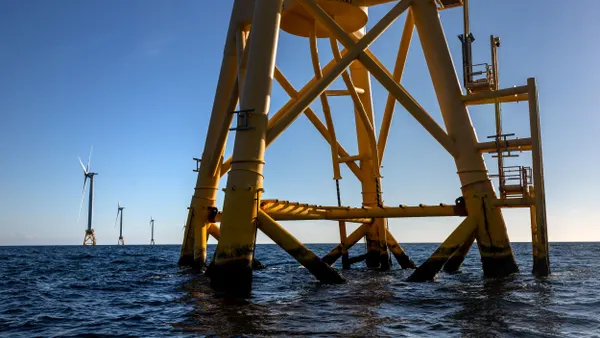The California legislature last week approved SB 700, which extends funding for the Self Generation Incentive Program (SGIP), the state’s chief vehicle for expanding behind-the-meter energy storage.
While solar and storage advocates cheered the bill's passage for the positive impacts it will have on deployment, the bill also seeks to bring the SGIP more in line with the state's greenhouse gas (GHG) reduction goals.
The state has acted as a leader in fighting climate change and reducing GHG emissions by setting a 100% renewable portfolio standard and increasing electric vehicles on the road. GHG reduction is one of the statutory goals of SGIP.
A key question when it comes to climate impacts is whether storage batteries are being charged by clean energy and discharged during times of high fossil fuel use.
Any changes are likely to become more apparent as the California Public Utilities Commission (CPUC) updates the regulations for SB 700. The changes also reflect some of the challenges facing the storage industry in California.
GHG targets unmet
Every year, the CPUC issues a report card on the SGIP program. The current report, released in November 2017 to reflect 2016 performance, found that while SGIP is generally helping to reduce system peak demand and customer bills, the program’s GHG reduction targets are not being met.
In theory, charging a storage device during low-price periods and discharging during high-price periods saves customers money. Using energy storage to offset peak-hour generation was assumed to reduce GHG emissions. However, the report found that during 2016, the non-residential storage projects analyzed increased GHG emissions by 726 metric tons of carbon dioxide.
To reach the GHG goals, SGIP storage projects must charge during cleaner grid hours and discharge during dirtier grid hours, or peak marginal GHG emissions hours. That doesn’t always happen.
The report said that the 2016 GHG shortfall was principally due to "rate designs that are misaligned with peak marginal GHG hours, which prevent customers from receiving signals that would lead to GHG reductions."
“We had no idea retail rates were such a poor price signal."

Alex Morris
VP of policy, California Energy Storage Association
The next report, to reflect 2017 SGIP performance, is due out this week. "It is going to be ugly," because rates for electric power were stale in 2017 and there were more systems operating and less understanding of the problem, Alex Morris, vice president of policy for the California Energy Storage Association (CESA), told Utility Dive. "We had no idea retail rates were such a poor price signal," he said.
Better price signals
As part of its efforts to revise its net metering program to reflect the rapid rise of solar power in the state and to ensure social equity in the distribution of solar incentives, California is switching to time-of-use (TOU) rates. Those rates are updated on a regular basis, but still they often do not coincide with actual energy consumption and prices. For example, mid-day was once a high-price period of peak energy usage but is now often a time when there is an oversupply of solar power.
As it stands, off-peak and on-peak energy prices often are not aligned with renewable generation and, therefore, are not the correct economic signals to drive storage behavior. But efforts are underway to change that.
Last December, the CPUC established an Energy Storage GHG Signal Working Group with the aim of improving GHG emission reductions from energy storage. In the past, the metric to assess that goal was the roundtrip efficiency (RTE) of an energy storage device — essentially a measure of how much energy is lost between discharge and charging cycles.
Already, there is a growing sense among stakeholders that the RTE metric is imperfect. In certain times of the year, an energy storage device might sit idle, but SGIP projects need to meet the RTE metrics. That can encourage them to discharge or charge despite the fact that doing so might lead to more GHGs.
The signal working group is looking at developing new metrics that would help storage devices improve their GHG reductions, a so-called GHG signal. If such a signal were made available, it could aid the operators of storage devices on the most opportune time to charge or discharge.
One of the steps the PUC could take, Morris said, would be to shift the energy storage performance penalty from the RTE metric to a GHG signal metric. For instance, the PUC could decide that only technologies that reduce GHG emissions are eligible for SGIP funding.
One of the issues still being discussed at the working group is whether compliance with the GHG signal should apply to individual energy storage installations or be applied across a portfolio of devices.
One of the implications of imposing tighter compliance with GHG goals, said Morris, could be that operators of storage installations might want to maintain a "deeper energy reservoir" to keep them from being forced to charge when a GHG signal is too high. One of CESA’s goals, Morris said, is to maintain control for storage operators rather than having the PUC apply proscriptive fixes.
If TOU rates can be revised to better reflect GHG emissions, that could solve the problem, Brad Heavner, policy director at the California Solar and Storage Association, told Utility Dive. If the rates are fixed, the market will "respond and do the right thing."
Currently the SGIP market is stalled — millions of dollars in the existing SGIP program are still not spent — because the rate structure is up in the air, Heavner said. But the new SGIP legislation establishes a multi-year budget that companies can bank on. Once the rate issues are settled, Heavner said, "the market is ready to go."





















